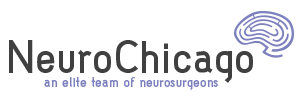Trigeminal Neuralgia / Tic Douloureux
Trigeminal neuralgia, also known as tic douloureux, is a fairly uncommon cause of facial pain. The term trigeminal refers to the fifth cranial nerve, which is called the trigeminal nerve. This nerve transmits sensation from the forehead and face. There is one on each side of the head. Trigeminal neuralgia nearly always involves a single nerve. Trigeminal neuralgia is more common in women than in men and is rare in patients under fifty years of age.
Cause of Trigeminal Neuralgia / Tic Douloureux
There are a number of possible causes of trigeminal neuralgia including pressure on the trigeminal nerve by a small artery or vein or a tumor in the back portion of the brain. Multiple sclerosis can also be a cause of these same symptoms.
Trigeminal Neuralgia / Tic Douloureux Symptoms
The classic symptom of trigeminal neuralgia is sudden, sharp, severe pain occurring in the forehead, cheek, jaw or a combination of these locations. The pain typically lasts only a few seconds and may repeat frequently. The pain is often described as an electric shock. The pain may be triggered by touching a certain spot on the face, eating, talking or swallowing. The symptoms may come and go.
Trigeminal Neuralgia / Tic Douloureux Diagnosis
As always, a careful history and physical examination are the first steps in diagnosis. In fact, in most cases, the diagnosis is made by history and examination alone. The examination should be normal. If there is a suspicion of tumor or multiple sclerosis, an MRI scan of the brain should be obtained.
Trigeminal Neuralgia / Tic Douloureux Treatment
The main treatment for trigeminal neuralgia is medication. There are a number of medications that may be tried either alone or in combination. These include phenytoin, baclofen, carbamazepine and neurontin. If medication fails to relieve the pain then surgical treatment may be proposed.
Surgical treatment for trigeminal neuralgia falls into three categories. The first is called percutaneous rhizotomy. This involves an operation performed under light anesthesia during which a probe is placed into the region of the trigeminal nerve. The nerve is then treated with one of the following; radiofrequency (heating), injection of glycerol or pressure from a small balloon. All of these methods have been shown to be effective in treating trigeminal neuralgia.
A second surgical treatment for trigeminal neuralgia is microvascular decompression. This involves an operation in which a small opening is made in the skull and the trigeminal nerve is inspected for the presence of an artery or vein causing pressure. The offending blood vessel is carefully moved away from the nerve and a pad is placed to protect the nerve from further compression.
Finally, stereotactic radiosurgery (highly focused radiation) using the Gamma Knife is a surgical option for the treatment of trigeminal neuralgia. This is a procedure that allows a very high dose of radiation to be delivered to the trigeminal nerve without damage to the surrounding structures.
The particular type of surgical treatment proposed depends on the individual patient.
